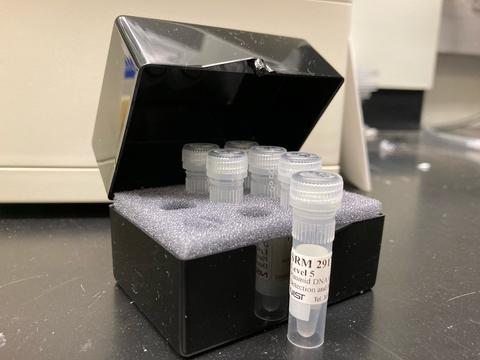
J. Kralj/NIST
As we approach summer beach season, you may occasionally encounter a "keep out" sign indicating that the area is temporarily closed. If fecal pollution is suspected, public health officials can run lab tests on water samples to check whether or not it's safe for people to swim in the water.
Despite the many lab methods available for health officials, the results are not always consistent. To help solve this issue, the National Institute of Standards and Technology (NIST) has collaborated with the Environmental Protection Agency (EPA) to develop a reference material - known as SRM 2917 Plasmid DNA for EPA-Developed Fecal Indicators - to help ensure more accurate results across the board for the methods public health officials are using.
"The key objectives for the development of NIST SRM 2917 were to help standardize the use of water quality monitoring methods across the nation and to develop a tool that can be used to establish method performance metrics," said EPA research geneticist Orin Shanks, who worked on the development of the SRM with NIST researchers. "The SRM can also help scientists, managers and the public evaluate the quality of measurements."
The EPA is responsible for developing tools to monitor recreational water quality, which includes beaches, lakes and rivers used for fishing, boating, swimming, surfing and other purposes. Fecal contamination of these waters could result from faulty septic systems, leaky sewer lines, stormwater discharges, agriculture runoff, overflows from combined sewer systems, wildlife or improper disposal of pet waste, as well as illegal activities, said Shanks.
People exposed to fecal contamination, whether through skin contact or swallowing the water, can suffer anything from minor illnesses to potentially fatal diseases. Children, the elderly and those with compromised immune systems may be at a higher risk.
Designed to help mitigate this issue, NIST SRM 2917 contains 13 genetic markers - known DNA sequences - that can be used to identify a pollution source or estimate the concentration of fecal pollution in a sample. The SRM was constructed from a plasmid, a small, often circular DNA molecule found in bacteria and other cells.
">






